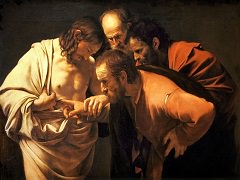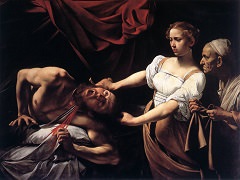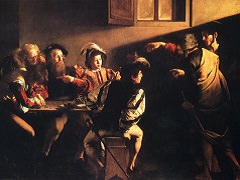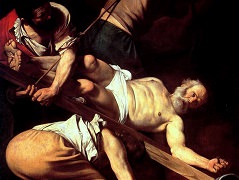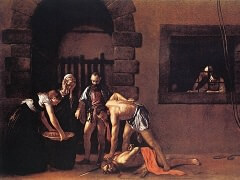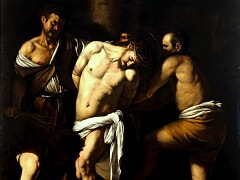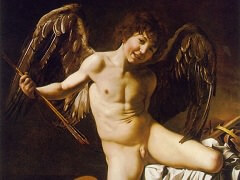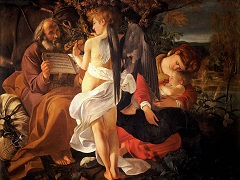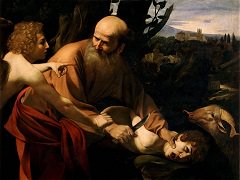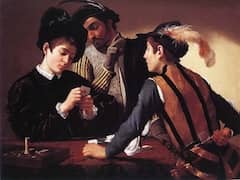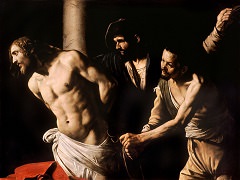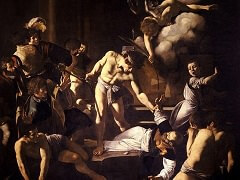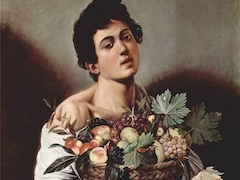Inspiration of Saint Matthew, 1602 by Caravaggio
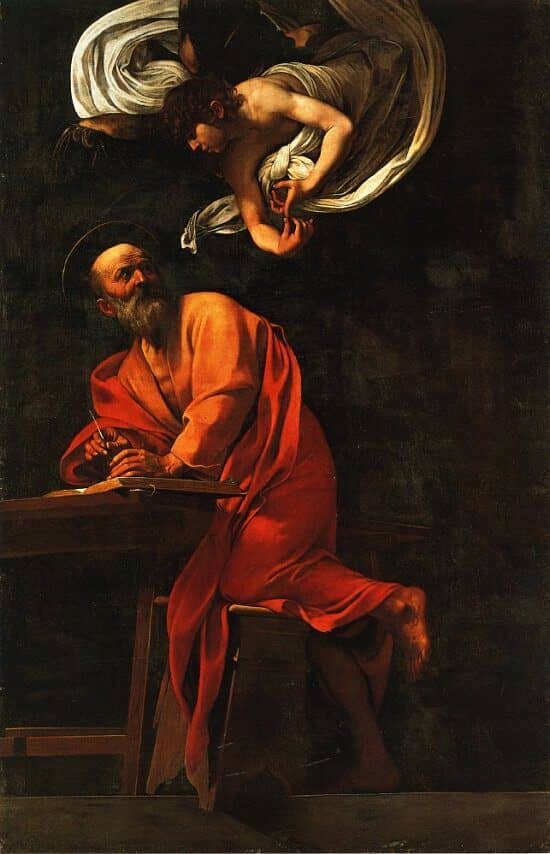
THE INSPIRATION OF SAINT MATTHEW is Caravaggio's second version of the subject, was the last in the series, although it is over the high altar and therefore
central in location as well as meaning. Unlike the lateral canvases, it is visible from all points in the chapel, a constant reminder of the importance of the Gospel. The angelic
messenger is evidently dictating to the saint, ticking off points on the fingers of his left hand. The reading of the text of the Gospel demonstrates that he has reached the second part
of the introduction, that is, Christ's genealogy and hence His continuity with the past.
Saint Matthew appears to have been portrayed from the same model as in the Martyrdom, and, appro¬priately enough, to be older than he was in the Calling. Despite his dignity, his noble,
bearded face and bald head, and his robes reminiscent of an ancient philosopher's, he is in a very unsettled pose, not having had time to sit down, and with the bench under his knee
tipping a little whimsically over the edge of a ledge. Obviously he is writing on the inspiration of the moment, coached by the angel. His role as a divine instrument is also implied
by his name, which was believed to derive from the words "manus" (hand) and "theos" (god).
Cardinal Contarelli originally intended that the two figures be placed side by side, as they were in the first version. By changing this scheme for the traditional arrangement of
the angel's flying in, Caravaggio emphasized the divinity of Matthew's inspiration and thus the authority of his Gospel. No doubt Caravaggio referred to some of the numerous sixteenth-century
prototypes for the compo¬sition. Perhaps he had access to Taddeo Zuccaro's drawing of The Flight to Egypt, where the poses and some of the gestures of Joseph and the angel, and the relation
between them, are similar. Or he may have been influenced by one of the many Venetian prototypes, of which the closest seems to be the reversed composition of The Inspiration of Saint
John the Evangelist that Francesco Bassano had painted a few years earlier.
The ledge beneath the bench precisely defines the saint's spatial position in relation to the altar and to the whole chapel. But the placement of the angel is ambiguous. He must be not
only above Matthew but also in front of him, judging from the saint's direction of regard. But in the whole context he is difficult to place, as if, like the blank, amorphous background, he were out of time and place. None-theless, he is fully corporeal and probably was inspired by actors in the contemporary theater, who were flown across the stage on wires.
Of the three paintings in the chapel, this shows the most use of the grooves that are incised in some of Caravaggio's paintings. Perhaps Caravaggio had been experimenting with this method
of preparation in the two lateral canvases and perfected it only in this, the last. The contours of the painted image as we now see it do not correspond exactly with these grooves, so it
is possible that Caravaggio first conceived of the bodies undraped, incised these contours in the wet priming, and then painted the drapery over them as if he were actually clothing nudes.

